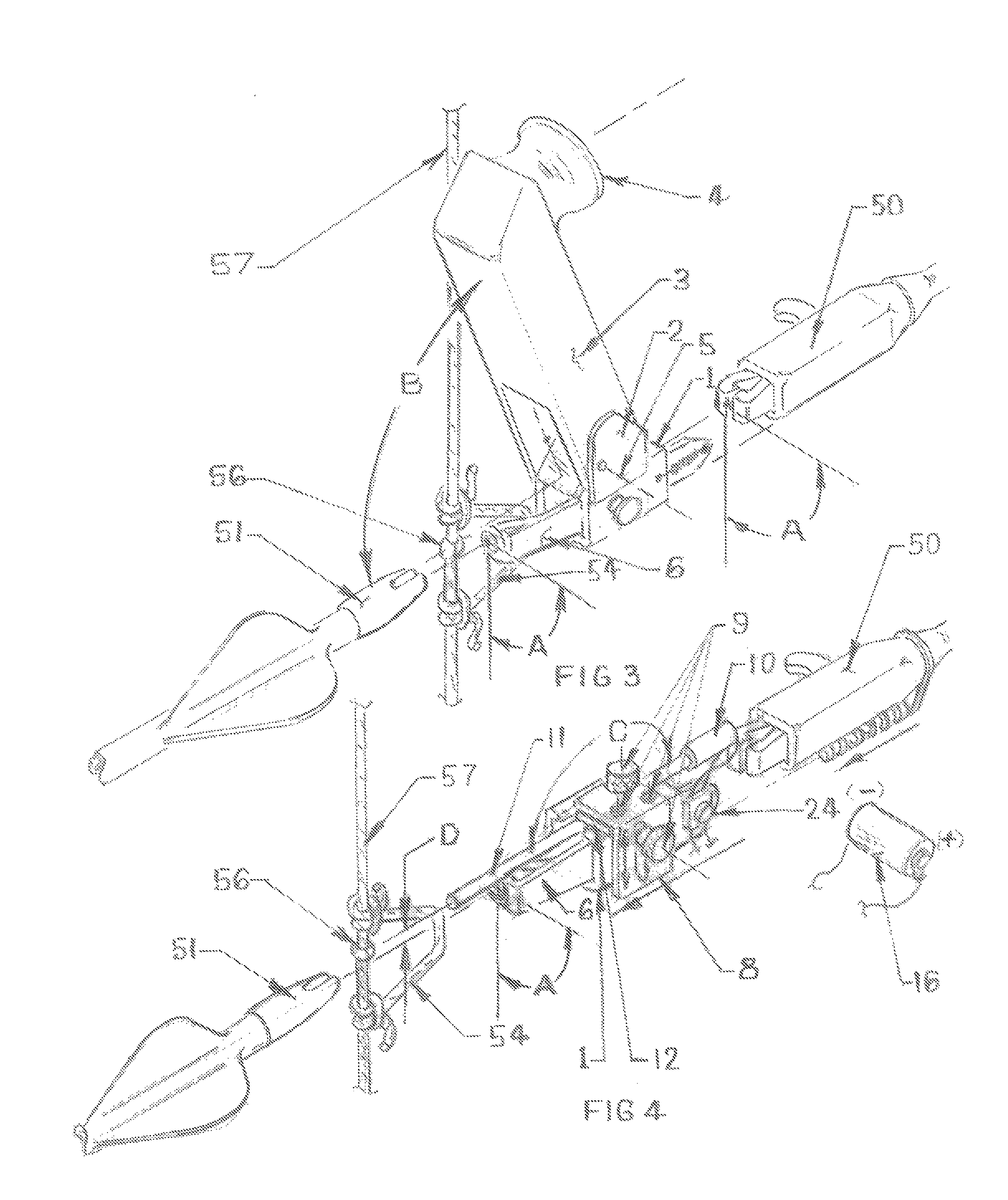Arrow aiming apparatus for bowstring releases
a bowstring and aiming apparatus technology, applied in the field of arrow aiming invention, can solve the problems of complex target face, high variability, and significant challenge in aiming an arrow, and achieve the effect of improving shooting repeatability and improving aiming repeatability
- Summary
- Abstract
- Description
- Claims
- Application Information
AI Technical Summary
Benefits of technology
Problems solved by technology
Method used
Image
Examples
Embodiment Construction
[0029]The embodiments of this invention may include a plurality of aiming devices that may be mounted onto or integrated into a Bowstring Release in a manner that enables an archer to aim along the shaft of an arrow to align the forward and rear ends of the arrow similar to aiming along the barrel of a rifle. The embodiments may enable the archer to precisely align the arrow with the target while in conventional vertical, tilted, or rotated bow shooting positions during daylight or lowlight ambient conditions. Examples of a variety of embodiments that may fulfill the functions of an Arrow Aiming Apparatus for Bow Releases are illustrated in the multiple views of the drawings and described in the Brief Description of the Drawing below.
BRIEF DESCRIPTION OF THE VIEWS OF THE DRAWINGS
[0030]Each view is identified by a [Figure—number] wherein the views illustrate examples of typical embodiments of the daylight / lowlight aiming devices and the forward and rear sighting devices that make up ...
PUM
 Login to View More
Login to View More Abstract
Description
Claims
Application Information
 Login to View More
Login to View More - R&D
- Intellectual Property
- Life Sciences
- Materials
- Tech Scout
- Unparalleled Data Quality
- Higher Quality Content
- 60% Fewer Hallucinations
Browse by: Latest US Patents, China's latest patents, Technical Efficacy Thesaurus, Application Domain, Technology Topic, Popular Technical Reports.
© 2025 PatSnap. All rights reserved.Legal|Privacy policy|Modern Slavery Act Transparency Statement|Sitemap|About US| Contact US: help@patsnap.com



